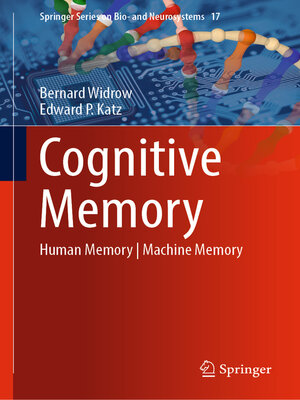Cognitive Memory
ebook ∣ Human Memory | Machine Memory · Springer Series on Bio- and Neurosystems
By Bernard Widrow

Sign up to save your library
With an OverDrive account, you can save your favorite libraries for at-a-glance information about availability. Find out more about OverDrive accounts.
Find this title in Libby, the library reading app by OverDrive.



Search for a digital library with this title
Title found at these libraries:
| Library Name | Distance |
|---|---|
| Loading... |
How does human memory work? How does human pattern recognition work? The book's motivation is twofold, to add to knowledge in the field of neuroscience, and to design a highly simplified cognitive memory constructed using software and existing electronic components. Readers are taken on an inspiring journey through the fundamentals of human memory, how it is constructed, and how it works in everyday life. The book goes more in-depth into the human side of cognitive memory — how seeing, hearing, walking and speaking works. Impairments in cognitive memory are also discussed. Lastly, the book sheds light on how meaning is extracted from sensory inputs and from stored data. This book is not without controversy. Neuroscientists accept the engrams (or memory traces) model that long-term memory is stored in the brain's neural networks. The authors believe that long-term human memory is stored digitally, in the DNA of brain cells, and not in analog neural networks. Further, the authors believe that innate knowledge of humans and animals is inherited, transmitted from parents to offspring at the moment of conception. The single cell contains the innate knowledge in the DNA of its nucleus. Memory is stored in DNA. The brain's neural networks are for access and retrieval of memory and not for actual storage. This book offers a unique, inspiring reading to researchers and other readers interested in the science of memory.







